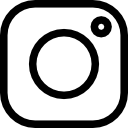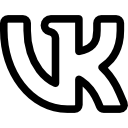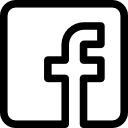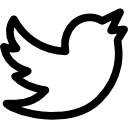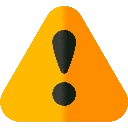part of the planning phase of the nursing process? A. Achieve SaO2 92% at all times. B. Auscultate chest q4h. C. Administer oral fluids q1h and PRN. D. Avoid overexertion at all times. ANS: A Rationale: The planning phase entails specifying the immediate, intermediate, and long-term goals of nursing action, such as maintaining a certain level of oxygen saturation in a client with pneumonia. Providing fluids and avoiding overexertion are parts of the implementation phase of the nursing process. Chest auscultation is an assessment. PTS: 1 REF: p. 12 NAT: Client Needs: Safe, Effective Care Environment: Management of Care TOP: Chapter 1: Professional Nursing Practice KEY: Integrated Process: Nursing Process BLM: Cognitive Level: Analyze NOT: Multiple Choice 13. A recent nursing graduate is aware of the differences between nursing actions that are independent and nursing actions that are interdependent. A nurse performs an interdependent nursing intervention when performing which of the following actions? A. Auscultating a client's apical heart rate during an admission assessment B. Providing mouth care to a client who is unconscious following a cerebrovascular accident C. Administering an IV bolus of normal saline to a client with hypotension D. Providing discharge teaching to a postsurgical client about the rationale for a course of oral antibiotics ANS: C Rationale: Although many nursing actions are independent, others are interdependent, such as carrying out prescribed treatments; administering medications and therapies; collaborating with other health care team members to accomplish specific, expected outcomes; and to monitor and manage potential complications. Irrigating a wound, administering pain medication, and administering IV fluids are interdependent nursing actions and require a health care provider's order. An independent nursing action occurs when the nurse assesses a client's heart rate, provides discharge education, or provides mouth care. PTS: 1 REF: p. 19 NAT: Client Needs: Safe, Effective Care Environment: Management of Care TOP: Chapter 1: Professional Nursing Practice KEY: Integrated Process: Nursing Process BLM: Cognitive Level: Analyze NOT: Multiple Choice ______________________________________________________________________________________________ ______________________________________________________________________________________________ Test Bank - Brunner & Suddarth's Textbook of Medical-Surgical Nursing, 15e (Hinkle, 2022) 5 | P a g e 14. A hospital audit reveals that four clients in the hospital have current orders for restraints. The nurse knows that restraints are an intervention of last resort, and that it is inappropriate to apply restraints to which of the following clients? A. A postlaryngectomy client who is attempting to pull out the tracheostomy tube B. A client in hypovolemic shock trying to remove the dressing over a central venous catheter C. A client with urosepsis who is ringing the call bell incessantly to use the bedside commode D. A client with depression who has just tried to commit suicide and whose medications are not achieving adequate symptom control ANS: C Rationale: Restraints should never be applied for staff convenience. The client with urosepsis who is frequently ringing the call bell is requesting assistance to the bedside commode; this is appropriate behavior that will not result in client harm. The other described situations could plausibly result in client harm; therefore, it is more appropriate to apply restraints in these instances. PTS: 1 REF: p. 28 NAT: Client Needs: Safe, Effective Care Environment: Safety and Infection Control TOP: Chapter 1: Professional Nursing Practice KEY: Integrated Process: Nursing Process BLM: Cognitive Level: Analyze NOT: Multiple Choice 15. A client agreed to be a part of a research study involving migraine headache management. The client asks the nurse if a placebo was given for pain management or if the new drug that is undergoing clinical trials was given. After discussing the client's distress, it becomes evident to the nurse that the client did not fully understand the informed consent document that was signed at the start of the research study. What is the best response by the nurse A. "The research study is in place and there is no way to know now." B. "I have no idea what is being given for your migraine." C. "What difference does it make? How is your headache?" D. "You signed the informed consent documents prior to the treatment." ANS: A Rationale: Telling the truth (veracity) is one of the basic principles of nursing culture. Three ethical dilemmas in clinical practice that can directly conflict with this principle are the use of placebos (nonactive substances used for treatment), not revealing a diagnosis to a client, and revealing a diagnosis to persons other than the client with the diagnosis. The nurse is following the guidelines of the research study, so re-educating the client about the study is the best the nurse can do. Saying "What difference does it make?" or "You signed informed consent documents" is not helpful because these statements are not supportive. While it is true that the nurse does not know what treatment the client received, this statement is also not supportive. PTS: 1 REF: p. 28 NAT: Client Needs: Safe, Effective Care Environment: Management of Care TOP: Chapter 1: Professional Nursing Practice KEY: Integrated Process: Communication and Documentation | Integrated Process: Nursing Process BLM: Cognitive Level: Analyze NOT: Multiple Choice 16. A care conference has been organized for a client with complex medical and psychosocial needs. When applying the principles of critical thinking to this client's care planning, the nurse should most exemplify what characteristic? A. Willingness to observe behaviors ______________________________________________________________________________________________ ______________________________________________________________________________________________ Test Bank - Brunner & Suddarth's Textbook of Medical-Surgical Nursing, 15e (Hinkle, 2022) 6 | P a g e B. A desire to utilize the nursing scope of practice fully C. An ability to base decisions on what has happened in the past D. Openness to various viewpoints ANS: D Rationale: Willingness and openness to various viewpoints are inherent in critical thinking; these allow the nurse to reflect on the current situation. An emphasis on the past, willingness to observe behaviors, and a desire to utilize the nursing scope of practice fully are not central characteristics of critical thinkers. PTS: 1 REF: p. 11 NAT: Client Needs: Psychosocial Integrity TOP: Chapter 1: Professional Nursing Practice KEY: Integrated Process: Nursing Process BLM: Cognitive Level: Apply NOT: Multiple Choice 17. The nurse is providing care for a client with chronic obstructive pulmonary disease (COPD). The nurse's most recent assessment reveals an SaO2 of 89%. The nurse is aware that part of critical thinking is determining the significance of data that have been gathered. What characteristic of critical thinking is used in determining the best response to this assessment finding? A. Extrapolation B. Inference C. Characterization D. Interpretation ANS: D Rationale: Nurses use interpretation to determine the significance of data that are gathered. This specific process is not described as extrapolation, inference, or characterization. PTS: 1 REF: p. 11 NAT: Client Needs: Psychosocial Integrity TOP: Chapter 1: Professional Nursing Practice KEY: Integrated Process: Nursing Process BLM: Cognitive Level: Understand NOT: Multiple Choice 18. A nurse is admitting a new client to the medical unit. During the initial nursing assessment, the nurse has asked many supplementary open-ended questions while gathering information about the new client. What is the nurse achieving through this approach? A. Interpreting what the client has said B. Evaluating what the client has said C. Assessing what the client has said D. Validating what the client has said ANS: D Rationale: Critical thinkers validate the information presented to make sure that it is accurate (not just supposition or opinion), that it makes sense, and that it is based on fact and evidence. The nurse is not interpreting, evaluating, or assessing the information the client has given. PTS: 1 REF: p. 15 NAT: Client Needs: Psychosocial Integrity TOP: Chapter 1: Professional Nursing Practice KEY: Integrated Process: Communication and Documentation BLM: Cognitive NOT: Multiple Choice 19. A nurse provides care on an orthopedic reconstruction unit and is admitting two new clients, both status post knee replacement. What would be the best explanation why their care plans may be different from each other? A. Clients may have different qualifications for government subsidies. ______________________________________________________________________________________________ ______________________________________________________________________________________________ Test Bank - Brunner & Suddarth's Textbook of Medical-Surgical Nursing, 15e (Hinkle, 2022) 7 | P a g e B. Individual clients are seen as unique and dynamic, with individual needs. C. Nursing care may be coordinated by members of two different health disciplines. D. Clients are viewed as dissimilar according to their attitude toward surgery. ANS: B Rationale: Regardless of the setting, each client situation is viewed as unique and dynamic. Differences in insurance coverage and attitude may be relevant, but these should not fundamentally explain the differences in their nursing care. Nursing care should be planned by nurses, not by members of other disciplines. PTS: 1 REF: p. 12 NAT: Client Needs: Safe, Effective Care Environment: Management of Care TOP: Chapter 1: Professional Nursing Practice KEY: Integrated Process: Nursing Process BLM: Cognitive Level: Analyze NOT: Multiple Choice 20. The nurse is caring for a client whose family members are in a bitter conflict about the best course of treatment for the client. How should the nurse best address this challenging situation? A. Seek guidance from the client's primary health care provider. B. Offer to act as a mediator in the family's conflict. C. Involve the institution's ethics committee. D. Educate the client about the need for assertiveness skills. ANS: C Rationale: Challenging ethical or moral situations often benefit from the involvement of the ethics committee. Acting independently in the role of mediator likely goes beyond the nurse's skill and scope of practice. The primary health care provider likely cannot resolve this issue independently. Assertiveness on the part of the client may or may not be beneficial. PTS: 1 REF: p. 29 NAT: Client Needs: Safe, Effective Care Environment: Management of Care TOP: Chapter 1: Professional Nursing Practice KEY: Integrated Process: Nursing Process BLM: Cognitive Level: Apply NOT: Multiple Choice 21. A group of students have been challenged to prioritize ethical practice when working with a marginalized population. How should the students best understand the concept of ethics? A. The formal, systematic study of moral beliefs B. The informal study of patterns of ideal behavior C. The adherence to culturally rooted, behavioral norms D. The adherence to informal personal values ANS: A Rationale: In essence, ethics is the formal, systematic study of moral beliefs, whereas morality is the adherence to informal personal values. PTS: 1 REF: p. 24 NAT: Client Needs: Safe, Effective Care Environment: Management of Care TOP: Chapter 1: Professional Nursing Practice KEY: Integrated Process: Nursing Process BLM: Cognitive Level: Understand NOT: Multiple Choice 22. While developing the plan of care for a new client on the unit, the nurse must identify expected outcomes that are appropriate for the new client. What resource should the nurse prioritize for identifying these appropriate outcomes? ______________________________________________________________________________________________ ______________________________________________________________________________________________ Test Bank - Brunner & Suddarth's Textbook of Medical-Surgical Nursing, 15e (Hinkle, 2022) 8 | P a g e A. Community Specific Outcomes Classification (CSO) B. Nursing Outcomes Classification (NOC) C. State Specific Nursing Outcomes Classification (SSNOC) D. Department of Health and Human Services Outcomes Classification (DHHSOC) ANS: B Rationale: Resources for identifying appropriate expected outcomes include the NOC and standard outcome criteria established by health care agencies for people with specific health problems. The other options are incorrect because they do not exist. PTS: 1 REF: p. 18 NAT: Client Needs: Safe, Effective Care Environment: Management of Care TOP: Chapter 1: Professional Nursing Practice KEY: Integrated Process: Nursing Process BLM: Cognitive Level: Remember NOT: Multiple Choice
No review has been posted for this item yet
 Cookies!
Cookies!



